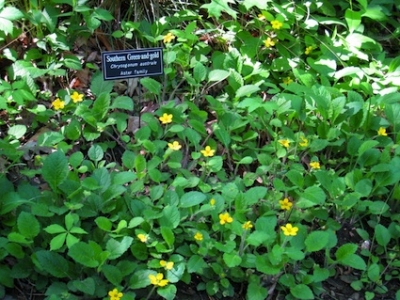 Mandated and Unmandated Open Access:
Mandated and Unmandated Open Access:
Comparing Green and Gold
Yassine Gargouri
&
Stevan Harnad
Cognition/Communication Laboratory
Cognitive Sciences Institute
Universitè du Québec à Montréal
SUMMARY: Velterop (2010) has conjectured that more articles are being made Open Access (OA) by publishing them in an OA journal ("Gold OA") than by publishing them in a conventional journal and self-archiving them ("Green OA"), even where self-archiving is mandatory. Of our sample of 11,801 articles published 2002-2008 by authors at four institutions that mandate self-archiving, 65.6% were self-archived, as required (63.2% Green only, 2.4% both Green and Gold). For 42,395 keyword-matched, non-mandated control articles, the percentage OA was 21.9% Green and 1.5% Gold. Velterop’s conjecture is the wrongest of all precisely where OA is mandated.
Jan Velterop has posted his
hunch that of the overall percentage of articles published annually today most will prove to be Gold OA journal articles, once one separates from the articles that are classified as self-archived Green OA those of them that also happen to be published in Gold OA journals:
JV: “Is anyone… aware of credible research that shows how many articles (in the last 5 years, say), outside physics and the Arxiv preprint servers, have been made available with OA exclusively via 'green' archiving in repositories, and how many were made available with OA directly ('gold') by the publishers (author-side paid or not)?
“The 'gold' OA ones may of course also be available in repositories, but shouldn't be counted for this purpose, as their OA status is not due to them being 'green' OA.
“It is my hunch (to be verified or falsified) that publishers (the 'gold' road) have actually done more to bring OA about than repositories, even where mandated (the 'green' road).” -- J. Velterop, American Scientist Open Access Forum, 25 August 2010
The results turn out to go strongly contrary to Velterop’s hunch.
Our ongoing project is comparing citation counts for mandated Green OA articles with those for non-mandated Green OA articles, all published in journals indexed by the Thompson/Reuters ISI database (science and social-science/humanities). (We use only the ISI-indexed sample because the citation counts for our comparisons between OA and non-OA are all derived from ISI.)
The four mandated institutions were Southampton University (ECS), Minho, Queensland University of Technology and CERN.
Out of our total set of 11,801 mandated, self-archived OA articles, we first set aside all those (279) articles that had been published in Gold OA journals (i.e., the journals in the
DOAJ-indexed subset of ISI-indexed journals) because we were primarily interested in testing the OA citation advantage, which is based on comparing the citation counts of OA articles versus non-OA articles published in the same journal and year. (This can only be done in non-OA journals, because OA journals have no non-OA articles.) This left only the Green OA articles published in non-Gold journals.
We then extracted, as control articles for each article in this purely Green OA subset, 10 keyword-matched articles published in the same journal and year. The total number of articles in this control sample for the years 2002-2008 was 41,755. (Our preprint for PloS, Gargouri et al. 2010, covers a somewhat smaller, earlier period: 2002-2006, with 20,982 control articles.)
Next we used a robot to check what percentage of these unmandated control articles was OA (freely accessible on the web).
Of our total set of 11,801 mandated, self-archived articles, 279 articles (2.4%) had been published in the 63 Gold OA journals (2.6%) among the 2,391 ISI-indexed journals in which the authors from our four mandated institutions had published in 2002-2008. Both these estimates of percent Gold OA are about half as big as the total 5% proportion for Gold OA journals among all ISI-indexed journals (active in the past 10 years). To be conservative, we can use the higher figure of 5% as a first estimate of the Gold OA contribution to total OA among all ISI-indexed journals.

Now, in our sample, we find that out of the total number of articles published in ISI-indexed journals by authors from our four mandated institutions between 2002-2008 (11,801 articles), about 65.6% of them (7,736 articles) had indeed been made Green OA through self-archiving by their authors, as mandated (7,457 or 63.2% Green only, and 279 or 2.4% both Green and Gold).
In contrast, for our 42,395 keyword-matched, non-mandated control articles, the percentage OA was 23.4% (21.9% Green and 1.5% Gold).

Björk et al’s (2010) corresponding finding [
Table 3] for their ISI sample (1282 articles for 2008 alone, calculated in 2009), was 20.6% total OA (14% Green plus 6.6% Gold). (For an extended sample that also included non-ISI journals it was 11.9% Green plus 8.5% Gold.)

The variance is probably due to
different discipline blends in the samples (see Björk et al's
Figure 4, where Gold exceeds Green in bio-medicine), but whichever overall results one chooses – whether our 21.9% Green and 1.5% Gold or Björk et al’s 14% Gold and 6.6% Green (or even their extended 11.9% Green and 8.5% Gold), the figures fail to bear out Velterop’s hunch that:
“publishers (the 'gold' road) have actually done more to bring OA about than repositories, even where mandated (the 'green' road).”
Moreover (and this is really the most important point of all), Velterop's hunch is the wrongest of all precisely where OA is mandated, for there the percent Green is over 60%, and headed toward 100%. That is the real power of Green OA mandates.
References
Gargouri, Y., Hajjem, C., Lariviere, V., Gingras, Y., Brody, T., Carr, L. and Harnad, S. (2010)
Self-Selected or Mandated, Open Access Increases Citation Impact for Higher Quality Research.
PLOS ONE 10(5)
Björk B-C, Welling P, Laakso M, Majlender P, Hedlund T, et al. (2010)
Open Access to the Scientific Journal Literature: Situation 2009.
PLOS ONE 5(6): e11273.





